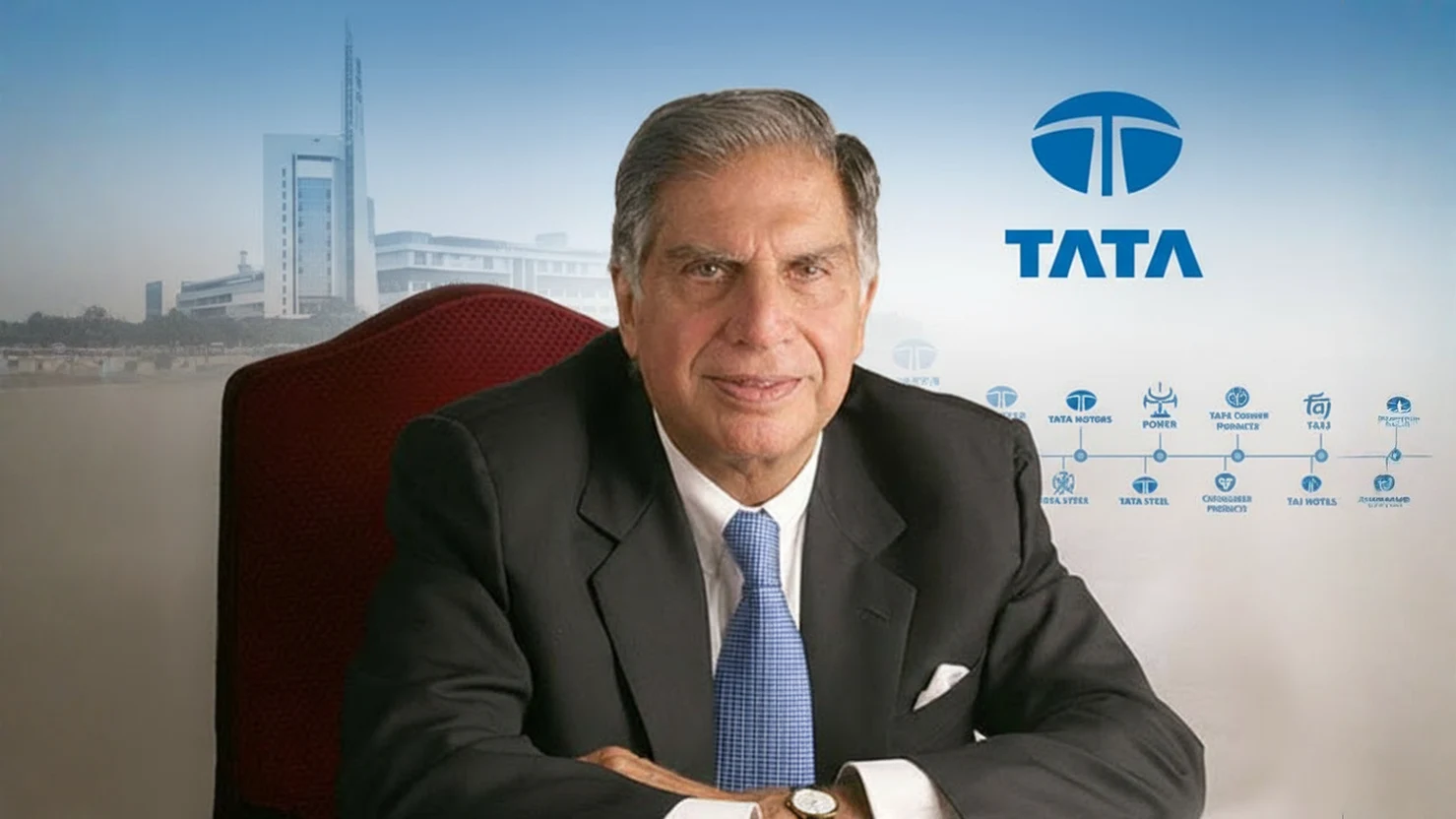Author: Aarya Shah | EQMint | General News
The Tata Group — one of India’s most respected and iconic business empires — is facing an unexpected storm. With internal divisions emerging among trustees and key figures within the Tata Trusts, questions are now being raised about the unity, governance, and long-term stability of the 156-year-old conglomerate.
For decades, Ratan Tata stood as the unifying force behind the group, steering it through globalization, diversification, and crises with an unwavering commitment to ethics and nation-building. However, in the months following his exit from active leadership, reports suggest that internal disagreements have begun to surface within the Tata Trusts, the charitable institutions that collectively hold about 66% of Tata Sons, the holding company of the Tata Group.
The Future of TATA: Navigating New Challenges
According to multiple industry insiders, differences have intensified among the trustees over the group’s future direction, control structure, and philanthropic priorities. These tensions, while not publicly acknowledged, have already sparked concerns about whether the once tightly-knit leadership structure is beginning to fracture in the absence of Ratan Tata’s stabilizing influence.
The Tata Trusts play a crucial role in shaping the conglomerate’s destiny. Unlike most corporate setups, Tata Sons — which controls listed companies like TCS, Tata Motors, Tata Steel, and Tata Power — is majority-owned by philanthropic trusts rather than individual family members. This structure, once celebrated as a unique blend of business and benevolence, now appears to be under stress as ideological and strategic differences come to light.
Industry analysts say that the underlying tension revolves around a classic conflict between legacy control and modern corporate governance. Some trustees reportedly favor retaining a strong philanthropic oversight on business affairs, while others argue for a clearer separation between charitable and commercial decision-making — allowing professionals more freedom to lead.
A senior business observer noted, “Ratan Tata’s leadership was unique because he commanded universal respect. His vision blended compassion with competitiveness. But without his presence, the Trusts now have to navigate leadership in a more corporate, less emotional way — and that’s where friction is showing.”
This isn’t the first time the Tata empire has seen internal turbulence. The 2016 ouster of Cyrus Mistry, the then-chairman of Tata Sons, exposed deep divisions between the Trusts and the board. What followed was a prolonged legal battle that not only drew public scrutiny but also challenged the group’s governance credibility. While the Supreme Court eventually ruled in Tata’s favor, the episode left behind lingering scars and a reminder of how delicate the balance of power truly is.
Fast forward to 2025, and the new concerns are less about external battles and more about internal cohesion. With Ratan Tata’s declining involvement, the question looms large — who will act as the moral compass and conflict-mediator when disagreements arise?
At the same time, Tata Sons is preparing for what could be one of the most significant developments in its history — a potential public listing. The listing would unlock massive shareholder value but also subject the company to heightened scrutiny, transparency requirements, and shareholder activism. Any hint of disunity at the Trust level could cast a shadow over investor confidence and delay this long-awaited milestone.
Market experts suggest that even the perception of instability could impact the conglomerate’s valuation, especially at a time when global investors increasingly factor in governance and leadership continuity in their assessments. “The Tata brand stands for reliability and ethics. If that perception wavers, even slightly, it can have ripple effects across its listed entities,” warned a Mumbai-based equity strategist.
Adding to the complexity is the evolving vision of the younger generation of business leaders within the Tata ecosystem. While the Trusts’ traditional focus has been on philanthropy, education, and healthcare, newer voices advocate for strategic reinvestment in emerging technologies, renewable energy, and digital infrastructure — areas critical to maintaining the group’s global competitiveness.
Despite these challenges, many industry veterans remain optimistic that the Tata legacy will endure. The group’s professional management under N. Chandrasekaran, Chairman of Tata Sons, has demonstrated impressive results over the past few years — reviving Air India, consolidating steel and auto operations, and strengthening the digital and electronics verticals.
However, for Chandrasekaran and his team to continue this momentum, they will need a clear and united mandate from the Tata Trusts. As one insider put it, “The strength of Tata Group has always been in its moral clarity and unity of purpose. Any rift at the top, however philosophical, can shake that foundation.”
The legacy of Ratan Tata — built on trust, transparency, and humility — remains a guiding light. Yet, the post-Tata era is testing whether that legacy can thrive without its architect at the helm. Will the trustees find common ground and safeguard the vision that built India’s most trusted corporate house? Or will ambition, ideology, and control begin to erode the cohesion that once defined the Tata name?
For now, the Tata Empire stands at a crossroads — balancing between its storied past and an uncertain future. The coming months will determine whether the group can rise above internal divisions and reaffirm its place not just as a business powerhouse, but as a moral benchmark for Indian enterprise.
Disclaimer: This article is based on information available from public sources. It has not been reported by EQMint journalists. EQMint has compiled and presented the content for informational purposes only and does not guarantee its accuracy or completeness. Readers are advised to verify details independently before relying on them.





